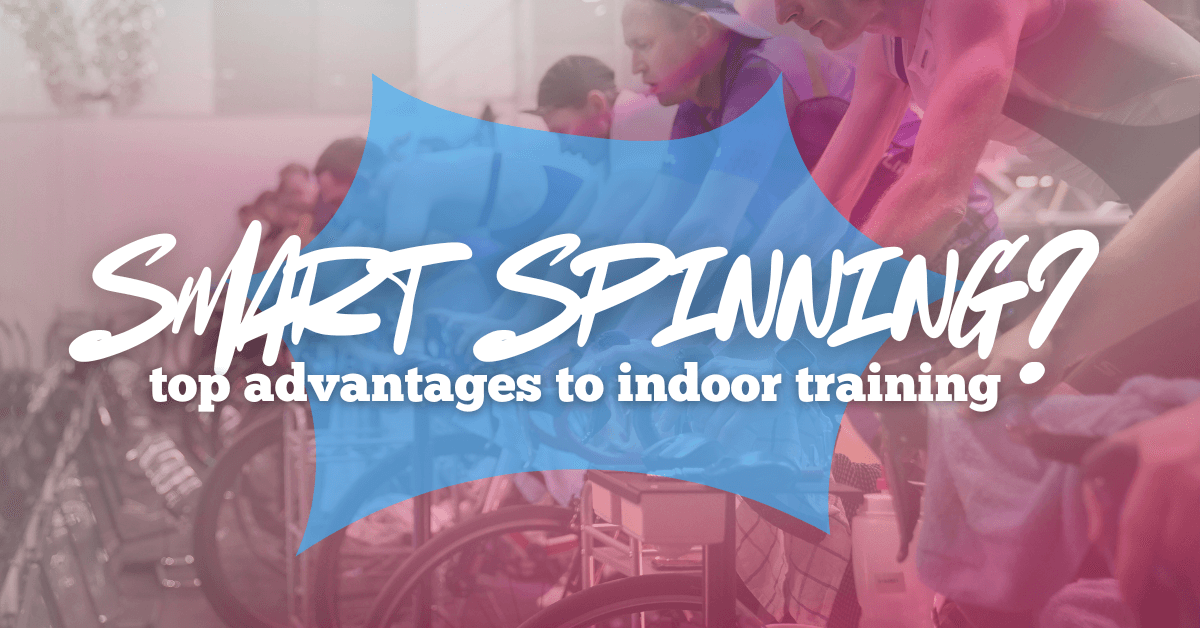As a cyclist, you might not have considered going hard in the gym before. But did you know gym workouts can be the perfect complement to cycling? Let’s learn 5 gym workouts that will make you stronger on the bike!
Getting started: how should cyclists approach the gym?
When you think of cycling, the gym might not be the first thing that comes to mind. After all, doing weightlifting reps in a room might feel like the opposite of a nice day out on the bike, huh?
Actually, the gym can be a perfect place for cyclists to strengthen the weaker parts of their body. Because cycling doesn’t work out all muscles equally, the gym provides a crucial gap-filler that will keep your fitness balanced.
But not all gym time is worthwhile. Let’s talk about how cyclists can make the most of this type of cross-training.
While you might be most comfortable going for long rides every day on your bike, the gym offers unique benefits with just a few visits a week, and it’s important to rest in between. Start with 2-3 sessions per week, ideally on your rest days or after shorter rides. You want to focus on building strength without adding bulk that could slow you down on the bike.
Want to lift? Start light and prioritize proper form. Don’t worry about lifting heavy weights right away… or ever. Cycling is about endurance and functional strength, so you want to approach the gym with that in mind. Keep your gym sessions to just 45-60 minutes, and always include a proper warm-up. For example, you can try a 10-minute session on the rowing machine or elliptical before hitting the weights.
If you’re still nervous to get started, you can consider working with a trainer for your first few sessions. As suggested before, many cyclists develop muscle imbalances from spending hours in the same position on the bike. A professional can best help identify and address these issues.
Finally, just like when you’re on the bike, remember to stay hydrated and fuel properly at the gym!
Ready to learn the best exercises for a cyclist stepping into the gym for the first time? Read on!
1. The cyclist’s most important asset: never skip leg day!
I know what you’re thinking. Hey, don’t I work out my legs enough on the bike? Your legs are your most important tool for cycling, and they do get an ample workout every time you go for a ride. However, as you progress as a rider, you may find your legs need more than just pedaling to reach their full potential.
In the gym, you want to focus on exercises that mirror the movements you make while cycling, but also include movements that address muscle imbalances.

Photo by Scott Webb (via Unsplash)
Compound exercises like squats, lunges, Romanian deadlifts and step-ups are the perfect starting point. Focus on deep squats with perfect form, keeping your weight in your heels. For squats, start by standing with your feet shoulder-width apart, then imagine you’re about to sit in an invisible chair behind you. As you lower yourself down, keep your chest up and your weight in your heels — you should be able to wiggle your toes. If you’re brand new to squats, try practicing with a bench or chair behind you at first, just barely touching it with your bottom before standing back up.
Both forward and reverse lunges are beneficial, especially if you add weight gradually. Deadlifts are great for hamstring strength and lower back stability. If a deadlift sounds intimidating, don’t worry! Think of this as trying to shut a door with your rear end while also holding a weight. Stand tall holding a light dumbbell in each hand, then hinge at your hips (not your waist) by pushing your hips back while keeping your back straight and knees slightly bent. You’ll feel a nice stretch in your hamstrings as the weights lower toward your shins, then squeeze your glutes (butt muscles) to stand back up.
Additional isolation exercises can be incorporated as needed. Leg press exercises are perfect for building pure strength without stability demands. Try some calf raises, both seated and standing, to hit different types of muscle fibers. Finally, hamstring curls will help with muscle balance and injury prevention.
Keep your reps in the 12-15 range for endurance. Use weights that challenge you but allow you to maintain form — there’s no point to the workout if your form is sloppy! Don’t forget to include unilateral (single-leg) exercises to address any strength imbalances between your legs.
2. Focusing on the arms.
Next, we’ll take a look at your arms, which don’t normally get as much of a workout on the bike. However, strong arms are crucial for bike handling, especially during long rides or technical descents. Remember, you need to build functional strength that won’t add unnecessary bulk. For this reason, we’ll focus on a few key exercises that won’t overdo it for your arms.
Start with regular push-ups. If you’re new to these, start with your hands on a bench or sturdy elevated surface (the higher the surface, the easier the push-up). Keep your body in a straight line, lower yourself down until your chest nearly touches the surface, then push back up. Think about screwing your hands into the ground — this helps engage your chest muscles properly. Dumbbell rows can also keep your core engaged and focus on controlled movements.
A really important exercise for cyclists is tricep dips. These will help you with maintaining position on the handlebars. Light shoulder presses can also help.
Stabilizing exercises extend beyond your arms into your shoulders and back. Band pull-aparts are a fantastic choice for shoulder health and posture. Face pulls and lateral raises can both help counter the forward-hunched cycling position.
Here, aim for slightly higher reps (15-20) with lighter weights. Remember, we want to focus on building endurance and stability, not bulk! Remember that it’s most important to work your arms in different planes of motion to develop well-rounded strength.
3. Concentrate on your core.
Your core is your power transfer center, connecting your legs to your upper body. A strong core means better power output and reduced fatigue.
Many cyclists incorporate yoga into their routine to strengthen their core. However, you can also use gym exercises for your core. Here’s how!
Essential exercises include front, side, and reverse planks for total core stability. The trick is to keep your body in a straight line — no sagging in the middle or lifting your rear end toward the ceiling. Imagine balancing a glass of water on your back — that’s how still you want to be. Start with holding for 15-20 seconds and build up from there.
“Dead bugs” are also perfect for learning to engage your core while moving limbs. Don’t let the funny name throw you off — doing dead bugs is actually dead simple! Lie on your back with your arms reaching straight up toward the ceiling and your knees bent at 90 degrees (like a dead bug’s legs in the air!). The key here is to press your lower back firmly into the floor — try to imagine squishing a grape under your back. Slowly lower one arm and the opposite leg toward the floor while keeping that back pressed down, then bring them back up and repeat with the other side.
During any core workout, you want to focus on a dynamic twisting motion. Because you don’t normally do this on the bike, your core will benefit most from this type of exercise. Using light weights with Russian twists will allow you to focus on control. The aptly named bicycle crunches mirror the pedaling motion while working your core.
You can also focus on some anti-rotation strength training with simple Pallof presses. It looks simple, but packs a big punch for your core stability. Start by standing sideways next to a cable machine or resistance band that’s anchored at chest height. Hold the handle or band close to your chest, then press it straight out in front of you. Imagine you’re pressing a heavy door shut, but the weight is trying to pull you sideways instead of the door closing. The key is to resist that rotation: you want to stay as still as possible, like you’re trying to stand your ground in strong wind. This one’s a real game-changer for building that solid core you need for sprinting on your bike.
Perform these exercises in circuits. Here, you want to measure you efforts by time rather than reps (30-45 seconds per exercise). Keep your rest periods short to build endurance, but do what feels comfortable and don’t overdo it at first.
4. Improving the strength of your hands and wrists is key.
Hands and wrists are underrated in the gym. These smaller muscles probably aren’t what you were thinking of when you opened this article! But your hands and wrists take a beating on the bike, especially during long rides or rough terrain. Building strength here prevents fatigue and improves control.
Start with some farmer’s walks, which are great for grip strength and overall stability. These are exactly what they sound like – you’re walking while carrying weights, just like a farmer might carry heavy buckets. Grab a dumbbell in each hand (start light!), stand tall with your shoulders back, and walk forward taking controlled steps. Keep your core tight like you’re about to get punched in the stomach.
Plate pinches, where you hold weight plates between your thumb and fingers, can also be a good option. Use light weights for wrist curls. If you’re away from the gym but want to get some hand exercises in, you can also use a simple stress ball. Squeezing and gripping motions will be most important for cyclists wanting to improve their hands in the gym.
5. Honing back muscles for cycling.
We’ll finish up with the back, which any cyclist knows is very important on the bike. After all, a strong back helps maintain proper position and prevents pain during long rides. Here, we want to focus on exercises that improve posture and endurance. That means more light-to-medium weights!
Let’s go through our last set of essential moves. Some pull-ups (or assisted pull-ups) build overall back strength. Try some lat pulldowns while focusing on slow, controlled movements. Keep your chest up and shoulders back during seated cable rows to reap the biggest benefits. Superman holds are also great for lower back endurance.

Photo by Charlotte Karlsen (via Unsplash)
Postural exercises will focus on areas of the back that don’t get a lot of attention from other workouts, including bike rides. For example, band pull-aparts are perfect for working the often-neglected rear deltoids. Hold a resistance band at shoulder height with your arms straight out in front of you, hands about shoulder-width apart. Now imagine you’re trying to pull the band apart to show someone the writing in the middle of it. Keep your shoulders down (away from your ears) and squeeze your shoulder blades together as you pull.
TRX rows are also great for building functional strength. Round it out with some good mornings to strengthen the entire posterior chain. Despite their cheerful name, these require careful attention to form! Start standing with your feet shoulder-width apart and a light training bar or PVC pipe across your upper back (where you’d put it for squats). Think about the Romanian deadlift we talked about earlier – you’re doing that same hip hinge movement, but with the weight on your back instead of in your hands. Here’s the crucial bit: keep your core tight like you’re bracing for a punch, and don’t let your lower back round — we want to protect that spine!
Throughout your back workout, keep the focus on form and control. It’s easier to hurt your back in the gym, so be careful! In most cases, overdoing it can be even worse for your overall training than doing no cross-training at all.
A few final tips for training at the gym as a cyclist.
Worried about feeling fresh for your rides during the week? Schedule your gym sessions on your easy riding days or rest days. If you’re doing a long weekend ride, hit the gym midweek when your legs have bounced back. Remember, if you’re planning a big cycling event or race, it’s totally fine to dial back the gym work as you get closer to the big day.
Here’s one place where a lot of cyclists trip up — gym workouts demand different fuel than your usual rides. While you might be used to sipping on pure carbs during a long ride, gym sessions need more protein. Try having a small meal with both carbs and protein about two hours before hitting the gym. Something like oatmeal with protein powder or a turkey sandwich works great. And don’t forget to hydrate! You might not sweat as much as on a long ride, but you’re still working hard. Keep drinking water or sports drink throughout your workout, just like you would on your bike.

Photo by John Arano (via Unsplash)
Do you just love getting out and riding your bike? I might have bad news. The gym can feel… well, a bit boring in comparison. But here’s the thing: think of gym time in the context of making your next ride even better. Every squat you do is powering up your next climb. Each core exercise is helping you stay in the saddle for longer. Try setting specific gym goals that connect directly to your cycling. Maybe it’s building the strength to tackle that brutal hill that always beats you, or developing the core stability to ride longer without back pain. And use your cycling playlist at the gym. Those same tunes that get you pumped on the bike can make weight training feel more fun, not just a chore you have to do!
I hope this article has shown you how you can incorporate gym workouts into your life as a cyclist. That’s because smart gym cross-training can really take your cycling to the next level, perhaps better than anything else.
See you in the weight room! 🙂
Are you incorporating any gym work into your training? Which exercises do you enjoy? Tell us your top tips in the comments or on social media! ★










Leave a Reply